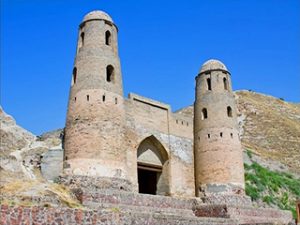
This content has been archived. It may no longer be relevant
When Tajikistan was a member of the Soviet bloc, central management of rural land was the norm and decision makers exercised little concern about how agricultural and irrigation practices affected local environments. Then, when the Soviet Union collapsed bringing civil war and poverty to communities, there was further environmental and infrastructure degradation causing landslides and flooding. Although more than 14,000 resident of the sub-district of Jura Nazarov in Tajikistan’s Vakhsh River valley depend on farming for their livelihood, only 30% of the land is arable.
However, since 2007 Tajikistan, with international support, has transitioned from a Soviet style economy choosing policies and systems that promote sustainable economic and environmental development. The United Nation Development Program (UNDP) has worked to empower local communities through local meetings, awareness campaigns, school events and theatrical productions that encourage residents to practice environmental stewardship. Consequently, people have new confidence to manage challenging local issues independently with less reliance on international assistance.
For example, in a project to restore the tugai forests residents have reduced tree-cutting by 90% since 2008 and forest regeneration has resulted in a 50% increase in animal and bird populations.
In agricultural areas, farmer field schools have introduced farming techniques to replace what farmers learned on collective Soviet-controlled farms and the UNDP has helped communities form user associations for water resource management and irrigation system repair.
In addition micro-credit services associated with farm schools have aided farmers in obtaining low-cost loans for investing in new agriculture practices. With their new knowledge and funding, farmers have made great strides: two-thirds have brought in new crops and initiated new production methods more suitable to local conditions; farmers have dramatically reduced fertilizer applications and 75% of respondents to a survey averaged a 25% increase in income.
With the additional income, farmers have renovated family homes; hired additional workers to increase production; repaired irrigation systems and drainage networks and sent their children to school. When farm schools helped farmers research traditional non-chemical and cheaper methods of pest control, others in the district began to adopt the safer practice.
Please contact us to learn how you can help our organization spread the seeds of sustainable development in Central Asian countries like Tajikistan.



